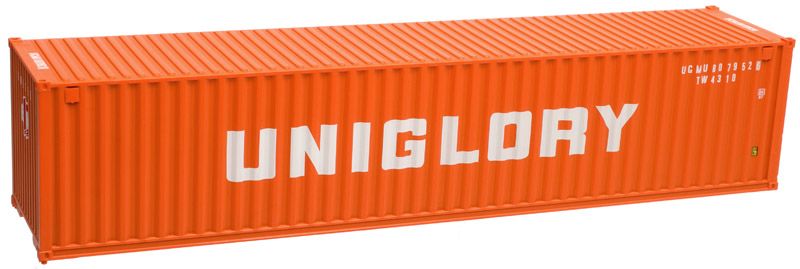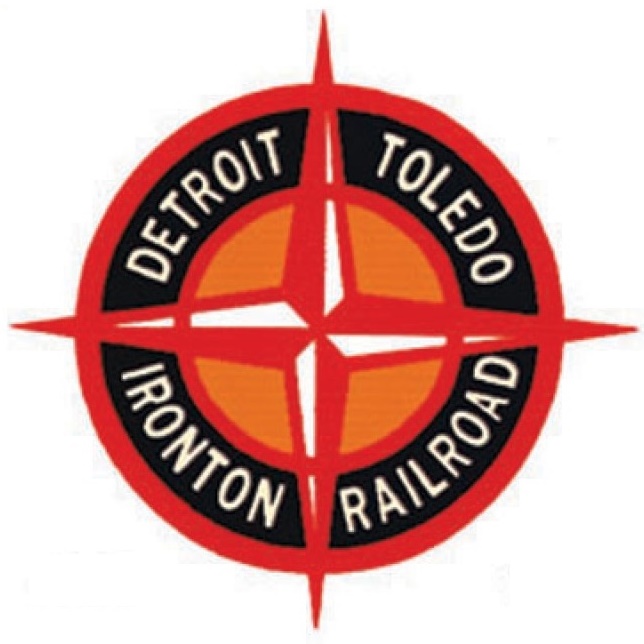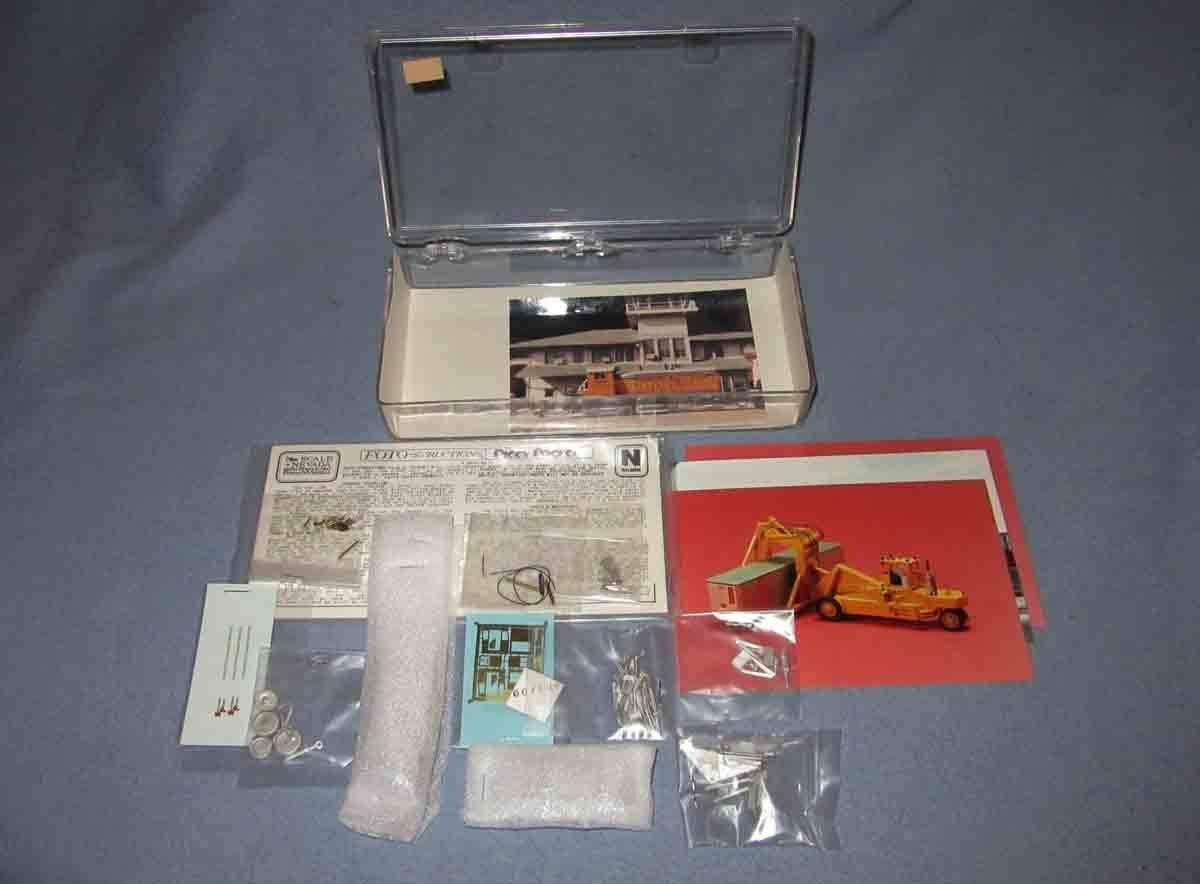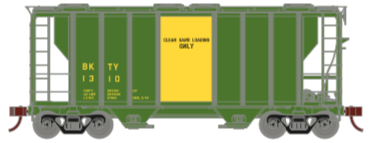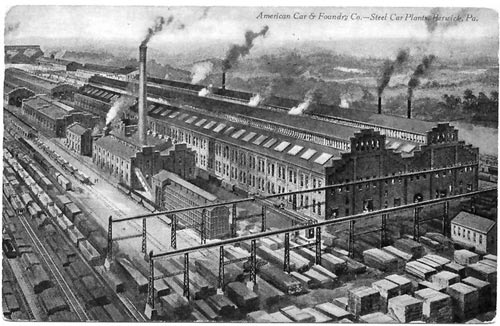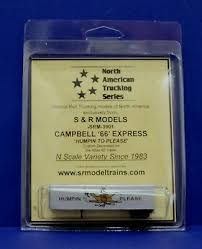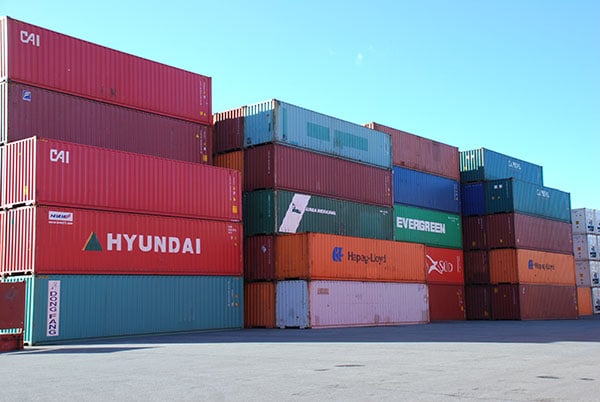Prototype History: The 40 foot container is the king of the container business. It is the most common standard container size used for international and domestic shipping. Most intermodal operations that handle overseas shipping are optimized for this container size. These containers are typically reinforced for loading, unloading and transportation by ship.
Dry containers are meant for non-refrigerated goods and hence are the most common type.
Corrugation in the construction of these containers yields much greater strength (just like with corrugated cardboard for boxes) but is more expensive to fabricate. Due to the extra strength granted by the corrugation, this is a popular type for overseas use.
Dry containers are meant for non-refrigerated goods and hence are the most common type.
Corrugation in the construction of these containers yields much greater strength (just like with corrugated cardboard for boxes) but is more expensive to fabricate. Due to the extra strength granted by the corrugation, this is a popular type for overseas use.
Road Name History: 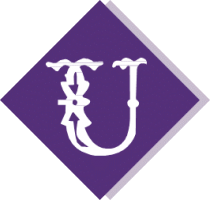 Uniglory is a Malaysian shipping company. The company was established in 1977 as Syarikat Universal Forwarding & Transport Agency. In 2001, the company was renamed Uniglory Logistics Sdn. Bhd.
Uniglory is a Malaysian shipping company. The company was established in 1977 as Syarikat Universal Forwarding & Transport Agency. In 2001, the company was renamed Uniglory Logistics Sdn. Bhd.
Uniglory Logistics started as a Forwarder at Port Klang. Over the years, the Company have expanded its scope of services to include brokerage, warehousing, transport services, project cargo, barge operations, ODD storage & repair, stevedoring, relocation services and marine operations.
In tandem with the above, the Company expanded its operations to cover the entire West and East Malaysia. In 2016, the company relocated its Corporate Headquarters to its current site at Bandar Bukit Tinggi, Klang.

Uniglory Logistics started as a Forwarder at Port Klang. Over the years, the Company have expanded its scope of services to include brokerage, warehousing, transport services, project cargo, barge operations, ODD storage & repair, stevedoring, relocation services and marine operations.
In tandem with the above, the Company expanded its operations to cover the entire West and East Malaysia. In 2016, the company relocated its Corporate Headquarters to its current site at Bandar Bukit Tinggi, Klang.
Brand/Importer Information: In 1924 Stephan Schaffan, Sr. founded the Atlas Tool Company in Newark, New Jersey. In 1933 his son, Stephan Schaffan, Jr., came to work for his father at the age of sixteen. Steve Jr. built model airplanes as a hobby and frequented a local hobby shop. Being an enterprising young man, he would often ask the owner if there was anything he could do to earn some extra spending money. Tired of listening to his requests, the hobby-store owner threw some model railroad track parts his way and said, "Here, see if you can improve on this".
In those days, railroad modelers had to assemble and build everything from scratch. Steve Jr. created a "switch kit" which sold so well, that the entire family worked on them in the basement at night, while doing business as usual in the machine shop during the day.
Subsequently, Steve Jr. engineered the stapling of rail to fiber track, along with inventing the first practical rail joiner and pre-assembled turnouts and flexible track. All of these products, and more, helped to popularize model railroading and assisted in the creation of a mass-market hobby. The budding entrepreneur quickly outgrew the limitations of a basement and small garage operation. Realizing they could actually make a living selling track and related products, Steve and his father had the first factory built in Hillside, New Jersey at 413 Florence Avenue in 1947. On September 30, 1949, the Atlas Tool Company was officially incorporated as a New Jersey company.
In 1985, Steve was honored posthumously for his inventions by the Model Railroad Industry Association and was inducted into the Model Railroad Industry Hall of Fame in Baltimore, Maryland. In addition, Steve was nominated and entered into the National Model Railroad Association Pioneers of Model Railroading in 1995.
In the early 1990s, the Atlas Tool Company changed its name to Atlas Model Railroad Company, Inc.
In those days, railroad modelers had to assemble and build everything from scratch. Steve Jr. created a "switch kit" which sold so well, that the entire family worked on them in the basement at night, while doing business as usual in the machine shop during the day.
Subsequently, Steve Jr. engineered the stapling of rail to fiber track, along with inventing the first practical rail joiner and pre-assembled turnouts and flexible track. All of these products, and more, helped to popularize model railroading and assisted in the creation of a mass-market hobby. The budding entrepreneur quickly outgrew the limitations of a basement and small garage operation. Realizing they could actually make a living selling track and related products, Steve and his father had the first factory built in Hillside, New Jersey at 413 Florence Avenue in 1947. On September 30, 1949, the Atlas Tool Company was officially incorporated as a New Jersey company.
In 1985, Steve was honored posthumously for his inventions by the Model Railroad Industry Association and was inducted into the Model Railroad Industry Hall of Fame in Baltimore, Maryland. In addition, Steve was nominated and entered into the National Model Railroad Association Pioneers of Model Railroading in 1995.
In the early 1990s, the Atlas Tool Company changed its name to Atlas Model Railroad Company, Inc.
Item created by: gdm on 2018-04-14 09:57:36. Last edited by CNW400 on 2020-10-19 11:52:54
If you see errors or missing data in this entry, please feel free to log in and edit it. Anyone with a Gmail account can log in instantly.
If you see errors or missing data in this entry, please feel free to log in and edit it. Anyone with a Gmail account can log in instantly.


